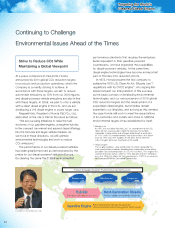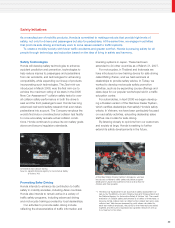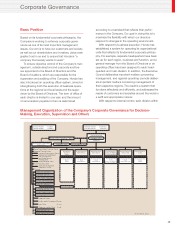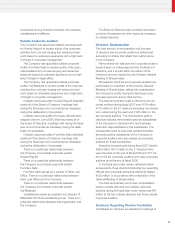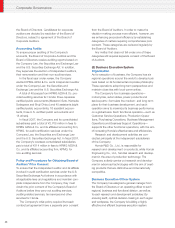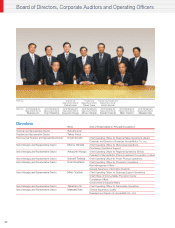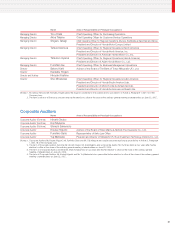Honda 2007 Annual Report Download - page 43
Download and view the complete annual report
Please find page 43 of the 2007 Honda annual report below. You can navigate through the pages in the report by either clicking on the pages listed below, or by using the keyword search tool below to find specific information within the annual report.
41
Risk Factors
Relating to Honda’s Industry
1. Honda may be adversely affected by
market conditions
Honda conducts its operations in Japan and through-
out the world, including North America, Europe and
Asia. A continued economic slowdown, recession or
sustained loss of consumer confidence in these mar-
kets, which may be caused by rising fuel prices or
other factors, could trigger a decline in demand for
automobiles, motorcycles and power products that
may adversely affect Honda’s results of operations.
2. Prices for automobiles, motorcycles and
power products can be volatile
Prices for automobiles, motorcycles and power prod-
ucts in certain markets may experience sharp
changes over short periods of time. This volatility is
caused by many factors, including increasingly fierce
competition, short-term fluctuations in demand from
underlying economic conditions, changes in import
regulations, shortages of certain supplies, high mate-
rial prices and sales incentives by Honda or other
manufacturers or dealers. There can be no assurance
that such price volatility will not continue or intensify
or that price volatility will not occur in markets that to
date have not experienced such volatility. Over-
capacity within the industry has increased and will
likely continue to increase if the economic downturn
continues in Honda’s major markets or worldwide,
leading, potentially, to further increased price pres-
sure. Price volatility in any or all of Honda’s markets
could adversely affect Honda’s results of operations
in a particular period.
General Risks Relating to Honda’s
Business
(Currency and Interest Rate Risks)
1. Honda’s operations are subject to currency
fluctuations
Honda has manufacturing operations throughout the
world, including Japan, and exports products and
components to various countries. Honda purchases
materials and parts, and sells its products in foreign
currencies. Therefore, currency fluctuations may
affect Honda’s pricing of products sold and materials
purchased. Accordingly, currency fluctuations have
an effect on Honda’s results of operations and finan-
cial condition, as well as Honda’s competitiveness,
which will over time affect its results. Since Honda
exports many products and components from Japan
and generates a substantial portion of its revenues in
currencies other than the Japanese yen, Honda’s
results of operations would be adversely affected by
an appreciation of the Japanese yen against other
currencies, particularly the U.S. dollar.
2. Honda’s hedging of currency and interest
rate risk exposes Honda to other risks
Although it is impossible to hedge against all currency
or interest risk, Honda uses derivative financial instru-
ments to reduce the substantial effects of currency
fluctuations and interest rate exposure on its cash
flow and financial condition. These instruments
include foreign currency forward contracts, currency
swap agreements and currency option contracts, as
well as interest rate swap agreements. Honda has
entered into, and expects to continue to enter into,
such hedging arrangements. As with all hedging
instruments, there are risks associated with the use of
such instruments. While limiting to some degree our
risk fluctuations in currency exchange and interest
rates by utilizing such hedging instruments, Honda
potentially forgoes benefits that might result from
other fluctuations in currency exchange and interest
rates. Honda also is exposed to the risk that its
counterparties to hedging contracts will default on
their obligations. Honda manages exposure to
counterparty credit risk by limiting the counterparties
to major international banks and financial institutions
meeting established credit guidelines. However, any
default by such counterparties might have an adverse
effect on Honda.
(Legal and Regulatory Risks)
1. The automobile, motorcycle and power
product industries are subject to extensive
environmental and other governmental
regulation
Regulations regarding vehicle emission levels, fuel
economy, noise, safety and noxious substances, as
well as levels of pollutants from production plants,
are extensive within the automobile, motorcycle and
power product industries. These regulations are





